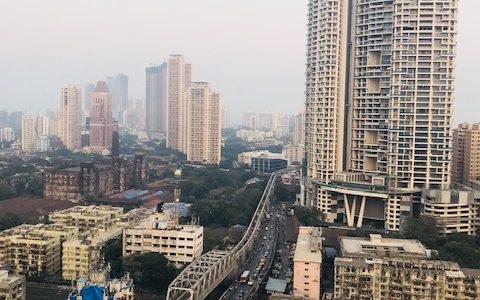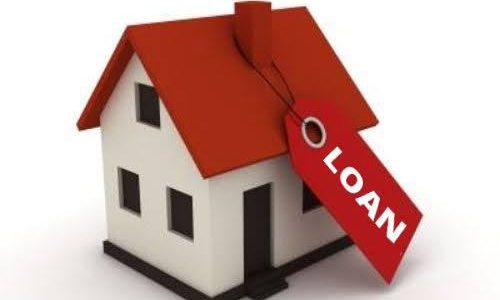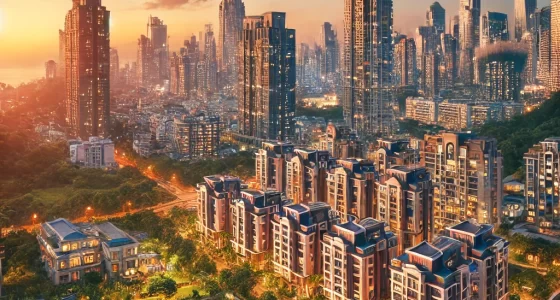By Bhavik Bhandari
In the bustling city of Mumbai, a wave of infrastructural development is set to redefine the real estate landscape. This surge in advancement is reshaping property dynamics and offering lucrative opportunities for investors, homebuyers, and businesses alike.
The Infrastructure Renaissance
Mumbai is experiencing an infrastructure renaissance, with projects such as the Mumbai Trans-Harbour Link (Atal Setu), coastal road projects, the Worli-Eastern Freeway Connector, the Eastern Freeway extension, airport developments, and metro rail expansions injecting new vitality into the city. These initiatives are enhancing connectivity and accessibility, expanding geographical reach, and spurring economic growth, leading to significant property value appreciation.
Connectivity and Accessibility: The New Gold Standard
Infrastructure development acts as a catalyst for urban rejuvenation, resulting in higher investor confidence and a surge in demand for well-connected areas. Proximity to metro stations or seamless access to coastal roads has become a premium feature for developers and homebuyers. According to a recent Knight Frank India analysis, of the total properties registered in January 2024, Central and Western suburbs constituted over 75%, highlighting these locations as hotbeds for new launches offering modern amenities and excellent connectivity.
Metro Rail Expansion: Transforming Undervalued Areas
The expansion of the Mumbai Metro network is a game-changer, particularly for underrated areas like Thane, Bhandup, Dombivali, and Kalyan-Shil Road. With reduced travel times and decongestion, these areas are experiencing increased demand for residential and commercial properties. The convenience of metro connectivity is driving up property values, making them attractive investment destinations.
Coastal Road Projects: Unlocking Prime Waterfront Development
The Coastal Road projects, especially the Versova-Malad link, are set to improve access to the southern parts of the city and open opportunities for new beachfront developments. High-end residential complexes along these routes are expected to command premium prices, attracting affluent buyers seeking luxury and leisure.
Mumbai Trans-Harbour Link: Bridging New Horizons
The Mumbai Trans-Harbour Link, spanning 21.8 kilometres, is revolutionizing connectivity between Mumbai and Navi Mumbai. By drastically reducing travel time between Sewri and Chirle to under 20 minutes, this project is unlocking new investment opportunities in areas like Alibaug, Ulve, and Kharghar. These neighbourhoods are positioned to emerge as prime real estate destinations, offering affordable housing and substantial investment potential.
Airport Developments: Boosting Real Estate Markets
The existing Chhatrapati Shivaji Maharaj International Airport, coupled with the planned Navi Mumbai International Airport (NMIA), is attracting significant investment in sectors such as hospitality, logistics, and aviation. Proximity to these airports is becoming a key factor driving property values, particularly in Navi Mumbai, which is witnessing a surge in infrastructure development and real estate activity.
The Commercial and Retail Boom
Improved infrastructure benefits residential sectors and significantly boosts commercial and retail spaces. Enhanced connectivity to business hubs and shopping districts encourages foot traffic and boosts its commercial viability. As Mumbai’s infrastructure continues to evolve, a significant uptick in demand for commercial properties in key areas is anticipated, further invigorating the real estate market.
The Residential Market: A Tale of Transformation
For the residential market, infrastructure development translates into increased demand for homes in well-connected areas. As Mumbai expands its metro networks and road projects, the appeal of living near these infrastructure nodes grows. Areas around metro stations are witnessing a surge in demand due to the unparalleled convenience they offer. Similarly, coastal road projects are making seaside residences more accessible and desirable.
Thane: A Case Study in Strategic Investment
Thane exemplifies how strategic infrastructure investment can transform a locality. With the Maharashtra government allocating a substantial Rs. 50,000 crore for infrastructure development in the region, Thane is poised to become a prime destination for residential investment. Projects like the Thane Bypass Road, Metro Lines, and the Borivali-Thane Underground Tunnel are set to drastically reduce travel times and improve the quality of life, making Thane an attractive choice for homebuyers and investors. Similarly, Wagle Estate, located near Thane, is on the brink of greater accessibility and economic growth. As the industrial heart of Thane city, Wagle Estate benefits from its proximity to major commercial centres. This strategic location, combined with excellent connectivity and abundant amenities, bolsters employment opportunities and reinforces the area’s reputation as a vibrant industrial hub.
Mumbai Metropolitan Region: A Growing Powerhouse
According to the Knight Frank report, the Mumbai Metropolitan Region (MMR) is poised for substantial growth. The report indicates that 80% of the region’s 118 million square feet of office space is in Mumbai. With the city’s population growth rate at 3.9% and the rest of the MMR at 40.3%, the long commute to work becomes inevitable for a large section of the workforce, shaping the real estate market.
The price gradient of residential properties in the region varies significantly, from Rs. 3,000 to Rs. 100,000 per square foot. This variation arises due to multiple factors, such as commuting time to employment hubs, access to education, healthcare, entertainment avenues, and the location profile.
The Role of Suburban Rail Networks
The suburban rail network has long been the backbone of commuting in the MMR, with over 2,813 train services operating daily across the Central, Western, and Harbour corridors. Ferrying more than eight million passengers daily, this network highlights the importance of staying close to office markets. Regions with good connectivity, like those along the suburban rail routes, have witnessed flourishing property development, driven by the demand for reduced travel times.
Conclusion: Embracing a New Era of Progress
As Mumbai undergoes a monumental transformation, the benefits of these infrastructure projects extend far beyond improved connectivity. They signify a new era of economic growth, enhanced quality of life, and a city that is more integrated and accessible than ever before. Envisioning the boundless possibilities that lie ahead, the journey of progress and prosperity is set to redefine Mumbai’s future. In this dynamic landscape, the commitment of leading luxury real estate developers is to harness these opportunities and deliver exceptional living experiences. By strategically aligning projects with these infrastructure developments, significant value is created for customers, contributing to the city’s growth story.
In summary, Mumbai’s infrastructure development is not just about new roads and bridges; it’s about creating a legacy of modern living that future generations will look back on with pride. This is not just an upgrade; it’s an urban metamorphosis that promises to make Mumbai more liveable, lovable, and remarkable.
Bhavik Bhandari, is the Chief Sales and Marketing Officer (CSMO), Ashwin Sheth Group
Also Read: Infrastructure projects set to power Real Estate growth in Navi Mumbai & Panvel region









